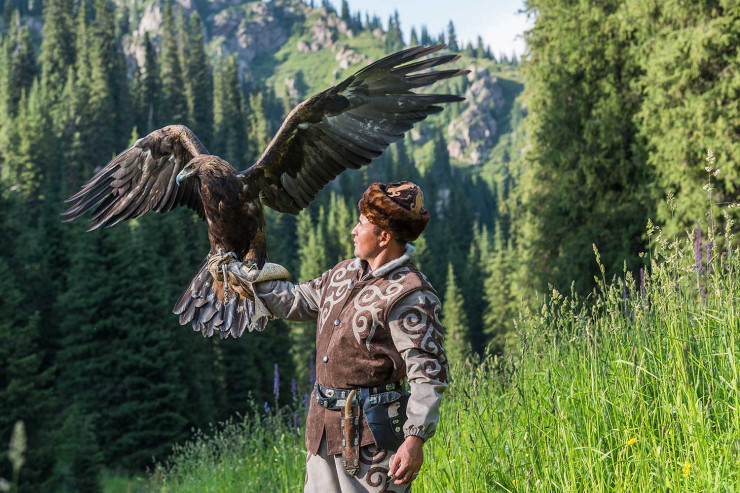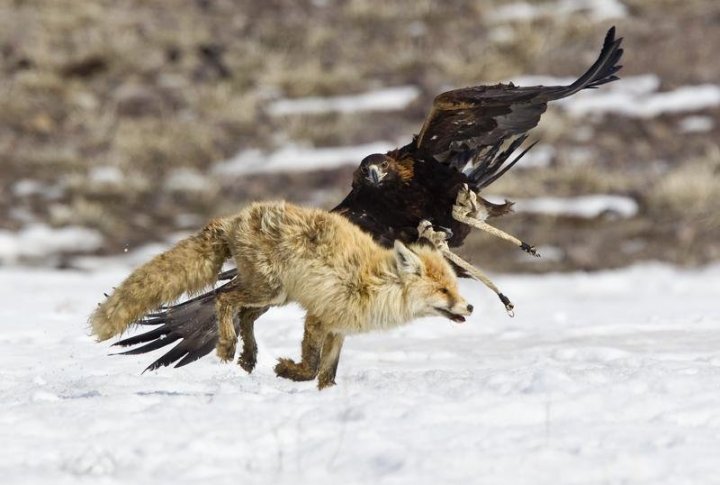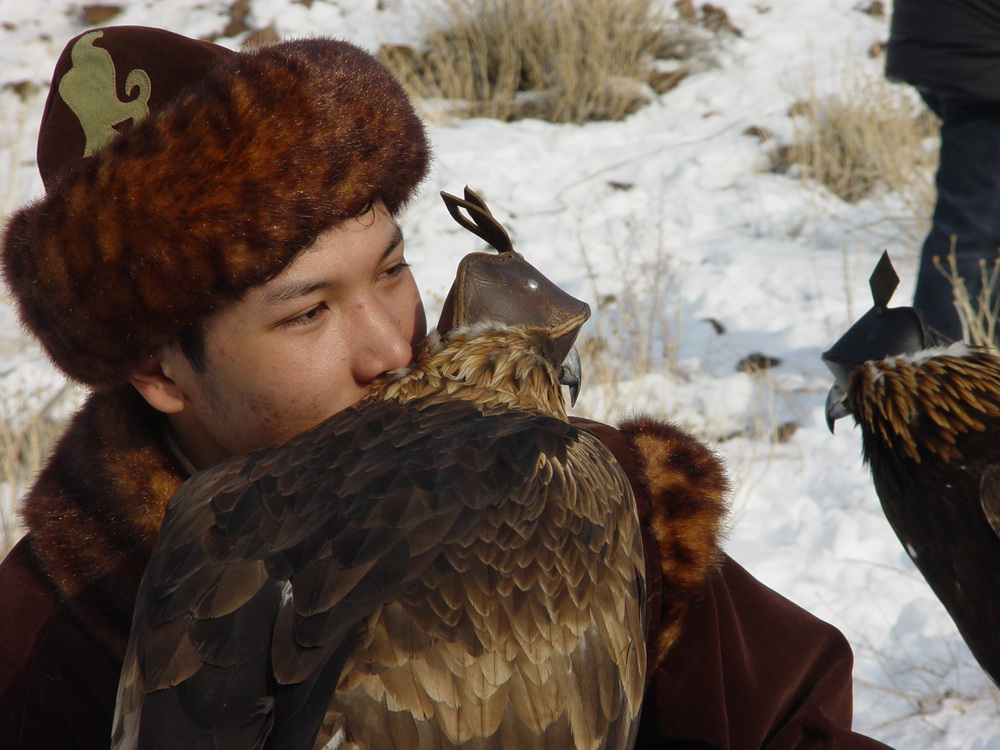ASTANA – Eagle hunting has been central to the Kazakh nomadic life for generations, and it remains as popular as ever in Kazakhstan, as the country hosts the 16th Kusbegilik championship among adults in the Atyrau Region on Feb. 24-26, reported the Kazakh Kusbegilik Federation’s press service.

Kazakhs consider themselves among the few nations in the world that know the value of eagle hunting. Photo credit: tengritravel.kz
Kusbegilik, or sayat, are Kazakh traditional names for the art of hunting with birds of prey, a tradition embedded in the country’s cultural heritage.
While celebrating hunting, such events are also a perfect place to learn how eagles became an essential part of the nation’s culture and a national tradition. It is also an opportunity to admire the skill of a berkutchi (eagle hunter), as Kazakhs consider themselves among the few nations in the world that know the value of eagle hunting.
Last year, over 100 berkutchis from China, Kazakhstan, Kyrgyzstan, Mongolia, Russia, Türkiye, and Ukraine participated in the international championship among eagle hunters.
The eagle circles in the clear blue sky, its sharp eyes scanning the mountains and valleys for prey: some of the foxhunting moments are incredibly attractive to witness.
The great Kazakh poet Abai in his dedicated poem “Kansonar,” which refers to hunting with golden eagles in the first snow, perfectly describes the beauty of the scenery.
“Snow is white, an eagle is black, a fox is red, it resembles a beauty bathing,” reads the poem.

“Snow is white, an eagle is black, a fox is red, it resembles a beauty bathing,” reads Kazakh poet Abai’s poem. Photo credit: Shamil Zhumatov/REUTERS.
A tradition that sprang from the Saka era
Eagle hunting is one of the oldest nomadic traditions that date back to the Saka period from the 2nd century B.C. Hunting has been a favorite royal occupation since ancient times.
A golden eagle was found in the burial of the second Golden Man discovered in the Atyrau Region in 1999. In 2012, among the Zheti-Tobe mounds in the Zhambyl Region, burials of people with the remains of hunting birds were discovered, dating back to the 7th-6th centuries B.C.
According to Karl Baipakov, academician of the Kazakh National Academy of Sciences and the head of the Kazakh Archaeological Society, 25 burial mounds are the graves of Saka kings, who were buried together with their pets – their hunting birds.
How to train an eagle
Watching the bird swooping down from a mountain in response to the hunter’s call is visually astonishing, but training a wild bird that has such austerity, grace, and beauty to it, is not an easy task. It is an art form that takes skill, patience, and respect for the bird.
The practice of capturing and training young eagles to hunt foxes and rabbits is passed down from father to son.

The gentle scenes of love and respect between the hunter and the bird in how he pats the bird, and the respect in his voice are truly delightful to watch. Photo credit: yvision.kz.
Back in the day, chicks were removed from nests that were closely monitored from the time that the eggs were placed there. An experienced berkutchi practically lived nearby so that he could investigate the unique biological characteristics of raptors in the wild.
It was important to capture the bird just at the right moment of growth – when it is old enough to fly but still young enough to be trained, from around three months of age.
Today, hunting birds of prey or taking them away from their nest is banned because eagles are recognized as endangered in Kazakhstan. One can buy the nestlings of a golden eagle, a falcon, or a hawk in special nurseries in Europe, Russia, and Kazakhstan.
Training the bird to aid in foxhunting is as challenging as the “taming of the shrew,” where patience is the only tool one can use.
First, the bird has to get used to the human. They learn to sit on a special glove on the hunter’s hand. Only the master can feed a golden eagle raw meat.
Once a golden eagle gets used to the berkutchi, his dog, horse, and his voice (berkutchis talk to birds all the time), the bird is trained to hunt an artificial fox. To do this, after waiting for a golden eagle to get hungry, the master ties a piece of bloody meat to the head of a stuffed fox. With a long, thin strap, the master’s assistant drags the stuffed fox. Then the master tears off the cap covering the golden eagle’s eyes. The hungry bird takes off, catches the stuffed animal, and sits on it.
Out of all of this, the most fascinating is to witness the hunter’s working relationship with the magnificent golden eagle. Much of the pleasure lies in the gentler scenes, which show the love and respect between the hunter and the bird: how he pats the bird, the respect in his voice when he talks to the bird, and his patient teaching.
Generations of Kazakhs have bonded with the eagle in this beautiful way.
The symbolism of an eagle
As symbols of courage and nobility, the eagles’ reputation precedes them.
Both among the Sakas and Turks, the culture was dominated by animal style, where a golden eagle and a falcon had a sacred meaning as animal totems.
According to ethnographer Bolat Yelikpay, in earlier times, people believed in the magical influence of birds of prey such as falcons, hawks, and golden eagles on the birth of a future batyr (a warrior-hero).
The epics often feature an episode where parents dream of a hunting bird on the eve of a batyr’s birth. The bird then accompanies the batyr in real life and becomes an embodiment of his heroic soul after his death.
With the spread of Islam in the region, hunting with birds of prey remained a favorite pastime, having special significance for the nobility. It is known that Arabs, especially rich and noble sheikhs, also liked to hunt with falcons in the desert.
In 2010, the United Nations Educational, Scientific and Cultural Organization (UNESCO) recognized hunting with birds of prey as a living human heritage practice.

